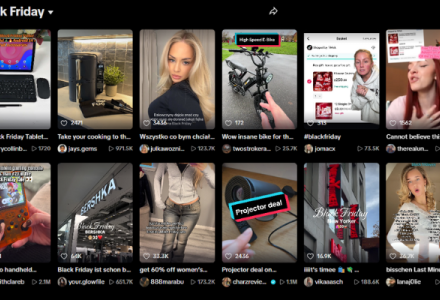5 Top Tips for Amazon Content Optimisation
Just like the retail shelf in any shop, an Amazon product listing page (PDP) is a ‘digital shelf’ to entice your target market, educate shoppers about your brand and convince them to make a purchase.
As Colin Lewis suggests in Econsultancy’s Third-Party Marketplaces Best Practice Guide, "The digital shelf is the precise place and time where a customer lands and ‘virtually’ interacts with your product’". To encourage interaction and make your products stand out on Amazon’s online shopping aisles, there is a set of content best practices to follow.
Now that the Amazon marketplace is becoming increasingly competitive, making your products ‘retail-ready’ is vital for commercial success. From a content perspective, this includes uploading search engine optimised-rich (SEO) copy, educational imagery and immersive A+ Page and Brand Store content. Every part of the page is an opportunity to increase conversion and drive sales.
To help your PDPs reach their full potential, here are 5 top tips for Amazon content optimisation.
1. Do Your Keyword Research
Instead of walking into a shop and searching for a particular item, online customers can type a relevant word or phrase into the Amazon search bar and relevant product listings appear instantly.
It is predicted that 63% of online consumers start their searches for products with Amazon, which is more than on Google. So, before all else, Amazon is primarily a research platform and all of its roadways to revenue begin with keywords.
Amazon is a search engine and a one-stop online shop combined. Therefore, inserting relevant keywords into your Amazon title, bullet points and description is pivotal. Not only will it instil confidence in the consumer that they have landed on the right page, but it will also trigger Amazon’s unique algorithm to boost your listing further up the rankings for that search term, which is known as keyword indexing.
Using Amazon-specific keyword research tools like Helium 10 or Jungle Scout helps you discover high search volume keywords that generate sales and keywords that competitors are indexing for. Aligning any keywords used in your Amazon advertising campaigns with your PDP copy is another way to improve your discoverability in the marketplace.
2. Don’t Neglect the Backend Keywords
Backend keywords are the secret boost that any product listing needs to stay competitive.
Whilst they are not visible to the shopper, they increase the visibility of your PDP and feed into the Amazon algorithm. On the Amazon backend, there are approximately 250 characters (this may differ between Amazon Vendor & Amazon Seller platforms) available for a string of keywords with spaces in between. Make the most of the total character limit to give your products the best chance possible on the digital shelf.
As Arishekar recommends in his Ultimate 2021 Guide to Amazon Backend Keywords, effective inputs include relevant synonyms, abbreviations, spelling variations, misspellings and keywords that didn’t make it into your titles, bullet points or descriptions on the front-end.
Remember, the search terms are not case-sensitive and readability is not important here, so try not to repeat keywords and avoid determiners such as ‘a, an, by, for, of, the, and with’.
3. Engage your Audience with Educational Images
Arguably, images are the most important component of your Amazon marketplace listing.
In an increasingly visual society, images give customers information faster than any other content format. Therefore, if you have premium, educational and engaging images, they will stand apart from other similar listings and convince the shopper that your product is the right choice.
At Tambo, we recommend uploading a minimum of six well-lit clear images that are mobile-friendly and at least 1,600 x 1,600 pixels to enable Amazon’s zoom functionality. As web useability expert, Steve Krug, summarises, ‘making every page or screen self-evident is like having good lighting in a store: it just makes everything seem better’. Getting a good first impression is paramount, so it’s important to include a variety of professional packshots from different angles, range shots and lifestyle images in the relevant context.
Uploading high-quality images is a great first step, but optimising them with educational infographics, unique selling points and concise usage instructions will increase engagement. It’s permitted for all of the thumbnails, except for the main image, which must feature the product on a white background only.
4. Drive Conversion with A+ Page Content
Below the title, bullet points and description on the product display page, you can enhance the shopping experience with branded A+ Page content.
This free feature is available to all sellers enrolled in the Brand Registry Programme. According to Othmane Sghir, CEO & Co-Founder of DataHawk, the presence of A+ content can lead to a +7% potential conversion uplift, or 15% for A+ premium content. DataHawk’s research also concluded that A+ Page content is one of the top 3 most influential factors affecting conversion.
You can select from a variety of modules and image banners to build your A+ Page to visually showcase your brand identity and ensure your PDP appears more premium. It’s another chance to demonstrate the product features and engage with your target audience.
Our top tips are to use the standard image module to enable more customised branded content, to keep the A+ Page content consistent with your image and Brand Store designs and to include a comparison chart. This module offers opportunities to upsell and cross-sell your product range with shopable links.
5. Create an Immersive Shopping Experience With a Brand Store
Maximise your PDP potential with a Brand Store, a personalised landing page within Amazon that mirrors your brand.com shopping experience.
It’s an all-in-one destination to introduce your brand story, display your entire catalogue of products (which can lead to increases in customers’ average shopping basket size) and include interactive elements like product videos.
Like Amazon A+ Page content, the brand store feature is free and available to those signed up to Brand Registry. Once built, you will get a unique Brand Store URL that you can link to social media platforms and Amazon Sponsored Brands advertising campaigns.
According to Amazon internal data in 2019, ‘linking your Sponsored Brands campaign to your Store page has a 28% better return on your ad spend, compared to linking to a product listing page alone’. If optimised effectively with keywords and meta tags, the URL can also appear on the Google search rankings to drive inbound traffic and broaden discoverability.
This all goes to show that product detail pages, A+ content and Brand Store pages make up an ever-evolving ‘digital shelf’ for online shoppers, where the opportunities for conversion through content optimisation are boundless.



